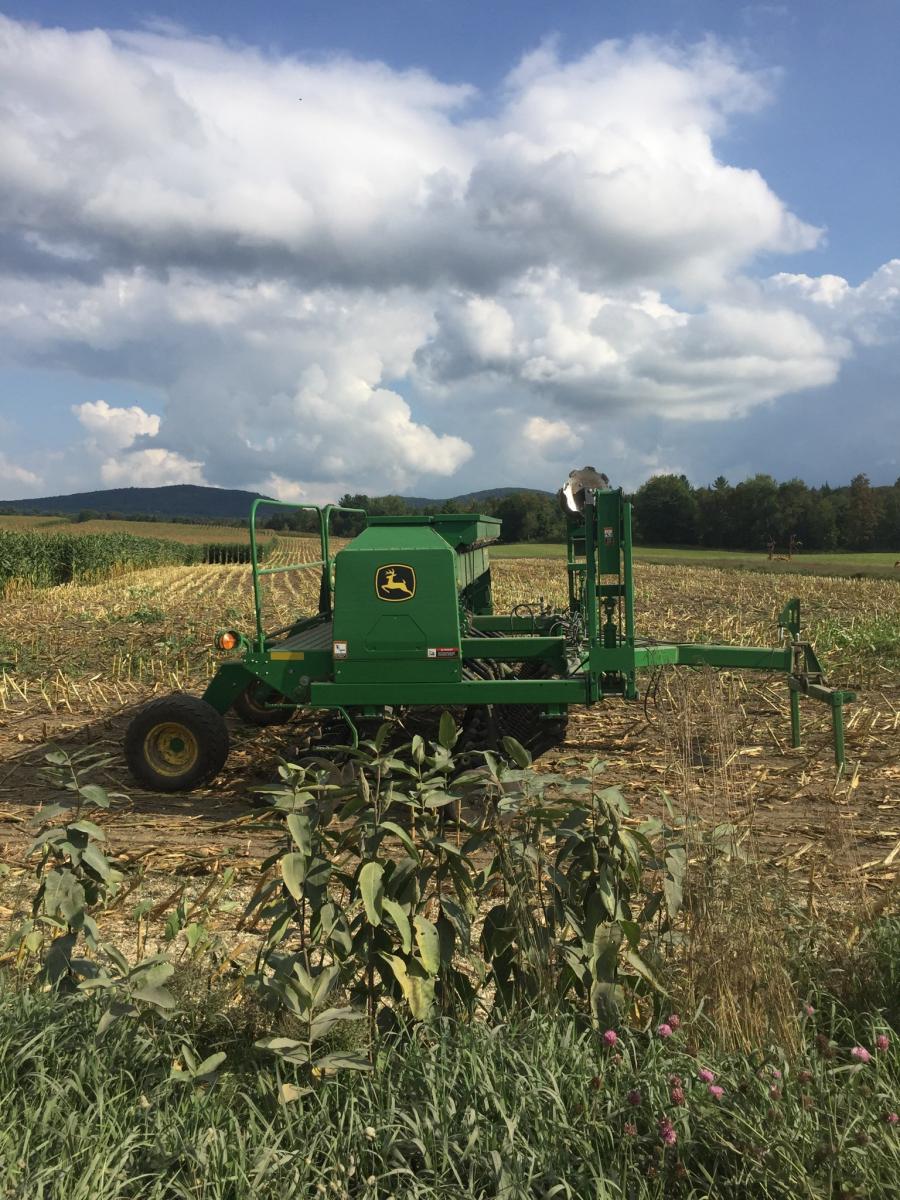By Marilia Muschett, ECO AmeriCorps member serving with the Vermont Agency of Agriculture, Food and Markets Water Quality Division - February 2022
As a member of the board of the Connecticut River Watershed Farmers Alliance (CRWFA), Steven Stocking has seen the benefits of the Vermont Agency of Agriculture, Food and Market’s Capital Equipment Assistance Program (CEAP) around the area. Stocking manages the CRWFA’s three drills that plant hay, legumes, and cover crops across this significant watershed, each of which is a different model that is suited for different landscapes, crops, and roads. All three drills were purchased with the assistance of grant programs such as CEAP and have seen a lot of use locally.
In an interview, Steven Stocking reflected that the Farmers Alliance is a useful resource for farmer-to-farmer recommendations on conservation tools and techniques. Stocking personally spends a lot of time taking the no-till drills to farmers, explaining how they work, and recalibrating them. In addition, he sees that CRWFA can play a valuable role in being a reference for funding and technical assistance programs.
On his own farm, Stocking recently successfully purchased a 6-row no-till John Deere planter with CEAP and Rural Development funds. He has already planted nearly 300 acres of corn with that drill, of which over 100 acres were planted into old sod. He exclaims, “These planters work great, planted right in, and did a good job.” He also shared an example of planting into old cover crop, where the corn fared well due to the improved soil-to-seed contact by the closers on the planter.
Another advantage of the no-till planter was the time and fuel saved through double cropping. Stocking explains, “It saved a lot of fuel, and was just so much easier. It enables you to plant when you have cover crop or are planting after first cutting or on nubbed down land. Planting no-till keeps you planting in conditions that would not have been able to have been operated on had it been fitted up ground, plowed and harrowed. With new wet spots and farmers trying to plant as much ground as they have historically, these no-till planters can go through it without disturbing ground cover, while still allowing space for the other crop to establish itself.”
While the grants take upfront effort, for Stocking and the CRWFA community, “the money is very helpful as the milk market is so volatile and you can't count on the money. But anybody who goes for the grant believes in what they're doing because it is a fair amount of work. You learn as you apply to the grant, you're looking at the equipment, you're looking at what it involves and trying to make sure you have a grant proposal that is going to be accepted.” Stocking feels supported by the Agency’s broad spectrum of programs that can help all types of farms and niches in the agricultural sector in Vermont.

If farmers in the Connecticut River Watershed are interested in learning more about the use of no-till equipment or borrowing CRWFA’s drills in future years, they can contact Steve Stocking at 802-333-4840 or Jennifer Byrne at 802-369-3167 or WhiteRiverNRCD@gmail.com.

